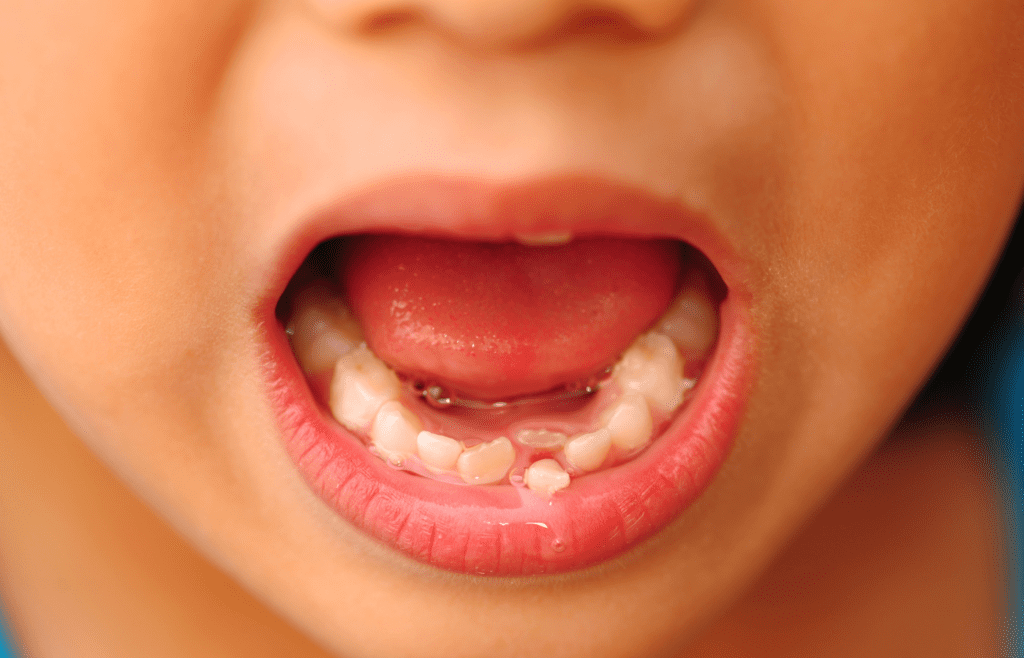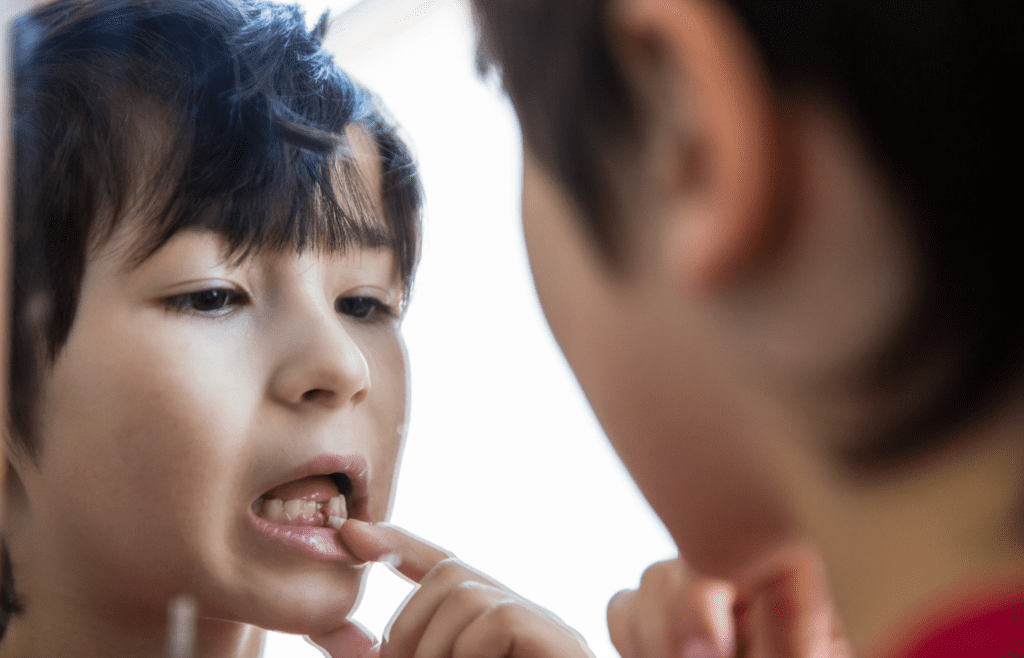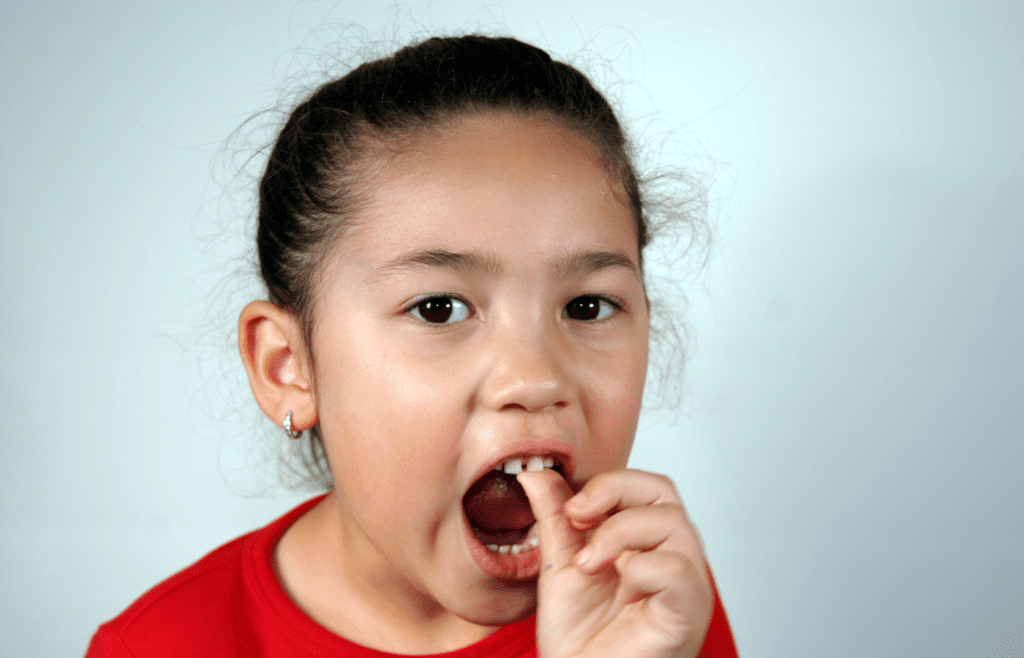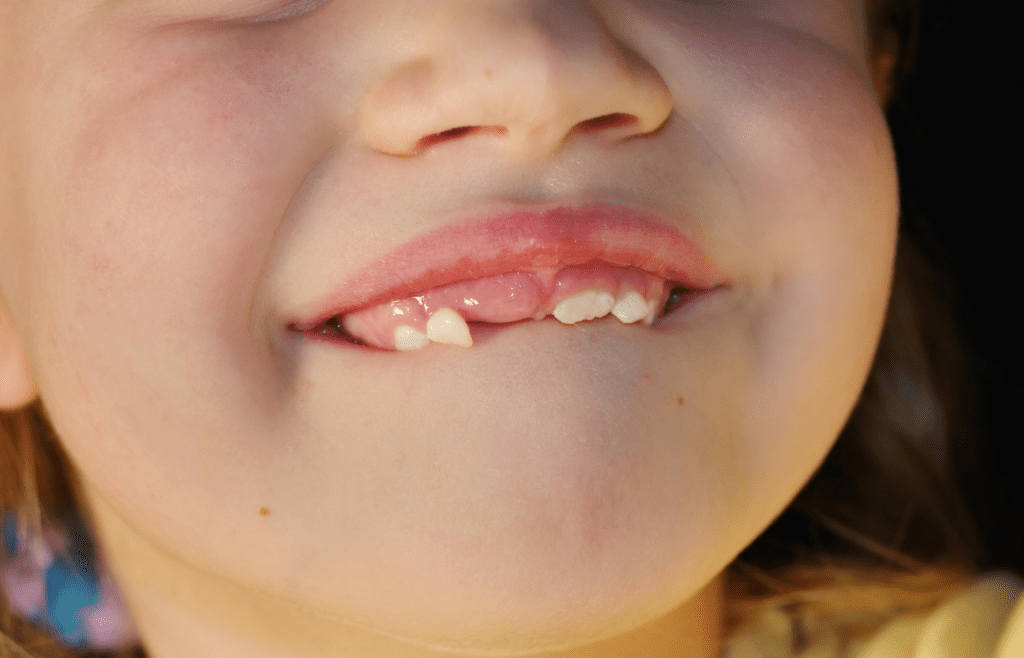If you’re a parent, you know it’s an exciting time when your child’s loose baby tooth starts wiggling.
You’ve probably taken a few cute pictures, talked about the tooth fairy, and wondered when the tooth will finally fall out.
But as the days go by and the tooth continues to dangle, you may start to worry about how to help your child get rid of it without any pain.
After all, no one wants to see their little one crying and screaming during a tooth extraction. As parents, we want to minimize the fear and pain they will feel.
The good news?
Pulling a wiggly tooth does not have to be painful at all.
With the right techniques, you can remove the tooth quickly and easily, without causing any unnecessary discomfort.
Here’s the truth.
Losing their primary teeth (that’s the technical term for baby teeth) is a rite of passage for every child, and it can actually be a really fun process to go through.
Most children lose their first tooth between ages 6 and 7 and they lose their last baby tooth around age 12.
In this post, we’ll show you how to pull a kid’s loose tooth with no pain, using tried-and-true methods that are safe, effective, and even a little bit fun.
So read on to discover the secrets of pain-free tooth extraction!
How To Pull A Tooth Without Pain (Overview)
To help your child pull their own tooth without pain, or to do it for them, you’ll want to know these helpful tips for doing it the right way:
- Wiggle the tooth as much as you can with your tongue.
- Eat hard, crunchy foods.
- Brush and floss your teeth firmly and regularly.
- Numb the area with ice.
- Use the twist and pull technique.
Now, Let’s dive in to each technique in a little more detail:
1. Wiggle, Wiggle, Wiggle!
The looser your tooth is when you pull it out, the less it will hurt.
Your child is probably already wiggling their tooth with their tongue. You can encourage this. Wiggling the tooth back and forth will definitely help it to loosen and fall out on its own.
Try to remind your child not to wiggle their tooth with their fingers because this can introduce bacteria into the mouth and increase the risk of infection. If your child insists on wiggling the tooth with their finger, remind them to wash their hands first.
2. Eat Hard, Crunchy Foods.
Giving your child hard and crunchy foods to bite on will help loosen up those loose teeth even more.
Hard foods like carrots, apples, and celery can even cause the tooth come out on its own. (Or in our family’s case, a piece of cheese pizza!)
Remind your child to be careful not to swallow the tooth.
If your child is chewing something and they think the tooth may have come out, tell them to spit the food into a napkin and then look for the tooth before continuing.
If your child accidentally swallows the tooth, there is probably not a cause for concern, but the best course of action would be to call your dentist.

3. Brush Your Teeth Firmly.
Firmly brushing your teeth will help to loosen a tooth without a lot of detectable pain.
Specifically brushing in an up and down motion, being careful to rub the sides of the loose tooth, will also help it to get looser and fall out sooner.
4. Floss it Out.
Using dental floss is a great way to encourage a loose tooth to come out.
First, take about 18 inches of floss and wind it around a finger on both hands. Place the floss between your thumb and forefinger.
Then, Place the floss between the loose tooth and its surrounding teeth. Use a back and forth motion and try to curve the floss at the bottom of the loose tooth.
If you need an even better grip, you can try using a flossing pick.
5. Use a Local Anesthesia or Ice.
If your child is afraid of pulling out their loose tooth, you can numb the area using a local anesthetic like Orajel.
One of the best methods for pulling a tooth in a painless way is by applying a topical anesthetic gel or teething gel that contains benzocaine on the tooth socket.
Make sure you read and follow the manufacturer’s instructions before you do anything.
You can also have your child chew on ice chips to numb the gums. (Ice chips are also helpful for relieving any pain after you pull the tooth).

6. Use a “Twist & Pull” Technique.
If you think your child’s tooth is loose enough to be pulled, you can use a piece of sterile medical gauze to get a firm grip on your child’s loose tooth and twist it gently to pull it out with a quick twist.
The American Dental Association reminds parents to be gentle, because a tooth that is loose enough to be pulled out will come out with just a gentle squeeze. It should be easy to twist and there shouldn’t be much pain.
Use back and forth and left-to-right movements. This will help remove any tissue that is keeping the tooth attached.
If it hurts your child when you pull on the tooth, or if the tooth does not move with light pressure, it is probably not time to pull the tooth yet. Remember, if you pull the tooth before it is ready, it can be very painful and cause dental problems.
Always be sure to use medical gauze when attempting to pull out a tooth.
When Should You Pull a Baby Tooth?
Your child’s teeth will usually fall out on their own (or with the help of your child’s tongue or a piece of hard, crunchy food).
If your child is over the age of 6 and the tooth is very loose, most dental professionals say it’s okay to help it along and pull it yourself.
If your child doesn’t want your help yet, the American Dental Association says it’s a good idea to wait it out a bit longer. There’s no rush.
When Should You NOT Pull a Baby Tooth?
If your child is under 5, if the tooth is barely loose, or if the tooth is loose due to an injury or accident, you should consult with your dentist.
Pulling a tooth before it is ready to be removed can cause an open wound, heavy bleeding and could even affect the permanent adult tooth that is coming in. It can also break the root of the tooth, leaving a gap that is more prone to health issues like an infection and plaque buildup.

After Care Tips for a Pulled Out Tooth
1. Manage Blood.
It is not uncommon for there to be a little blood where you have pulled the tooth.
First, you can apply pressure to the gums with a sterile piece of gauze to stop the bleeding. The bleeding should stop after a few minutes.
2. Check for fragments of the baby tooth.
Later, check for fragments of the baby tooth that may still be in the gums. If there are fragments remaining, call your dentist to ask them about it.
3. Be gentle with the area.
A blood clot will form in the tooth socket after pulling the tooth, and it’s important for that clot to remain in the place for the gum to heal properly. Your child should avoid that area when brushing or flossing, avoid extreme temperature, and they should avoid vigorous swishing or sucking for the next couple of days.
4. Take over the counter pain medication if necessary.
If your child is in pain you can offer them an over-the-counter pain medication. Read the instructions and use as directed.
5. Use Ice Chips.
You can also use ice chips to soothe the affected area, or a flexible, clean ice pack that will fit in the area.
6. Prepare for your visit from the Tooth Fairy!
The Tooth Fairy has been known to visit the homes of kids who just lost their tooth. Encourage your child to leave their tooth under their pillow, and they may find a bit of money in its place in the morning. We’ve heard that the Tooth Fairy leaves a special little something for each child’s first tooth.

Other Notes:
If you’re concerned about a tooth that doesn’t seem to be falling out as it should, take your child to a dentist instead of trying to pull it out at home. As the AAP explains, your child’s dentist may recommend a dental extraction (tooth removal).
Summary:
The bottom line is that pulling out a tooth for a child, or having them pull their own teeth, does not have to stressful or painful.
The looser a tooth is when it is pulled, the less pain it will cause. Be sure to use medical gauze to prevent introducing bacteria to the mouth.
If you have additional questions or are unsure about something, your best option is to call your dentist or a local dental office. They are the best resource for all things dental.
Congratulations on pulling your tooth.
And now, get ready to meet your permanent tooth!
Related Posts
How To Clean Your Child’s Clear Retainer
Calie Herbst, Editor-in-Chief of Milwaukee With Kids, has spent over a decade combining her experiences as a parent of three to create a hub for Milwaukee’s family adventures.
Her decade-long teaching career in Milwaukee Public Schools and academic background, including a Master’s in Teaching from Marquette University and dual B.A.s in Sociology and Spanish from the University of Wisconsin – Madison, fuel her passion for inclusive and engaging family content.
Calie is also a recognized voice in local media, contributing to WISN Channel 12 News, WTMJ Wisconsin Morning News, Fox 6’s Real Milwaukee, and B93.3.
Discover more about Calie’s journey and editorial approach on her About Page and Editorial Policy Page.









